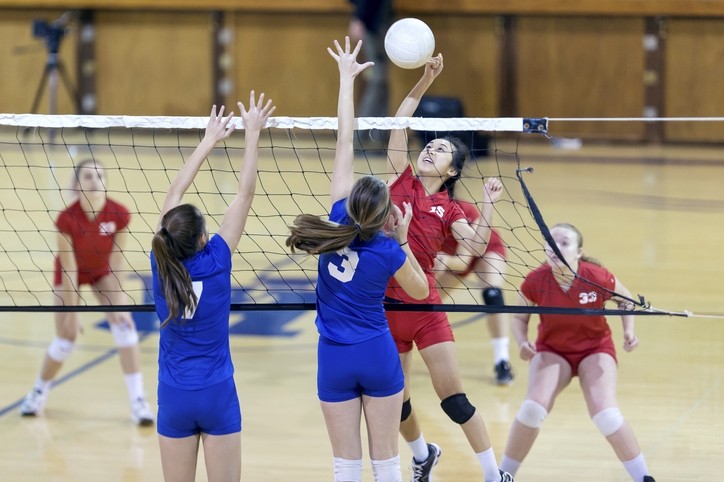Beta-Alanine consistently improves sports performance for volleyball players – RCT

Researchers in Korea’s Hoseo University found that beta-Alanine (BA) supplementation can enhance jumping abilities for volleyball players in a randomised controlled trial (RCT).
Additionally, BA supplementation also led to more consistent improvements in physiological and bio-motor performance, such as vertical jump, horizontal jump, spike jump, block jump, and 10-m linear sprint.
A non-proteinogenic amino acid, BA occurs naturally in the liver and is present in foods such as chicken, beef, pork, and fish.
Supplementation of BA during short sprint interval training increases the amount of carnosine in muscles, making them more efficient and less prone to fatigue, leading to bigger improvements in jumping ability for volleyball players.
“Through BA supplementation, athletes can increase muscle carnosine levels in both fast-twitch and slow-twitch muscles.
“Increased carnosine levels enhance the muscles’ ability to buffer acid, leading to a delayed onset of muscle fatigue and the potential advantage of inducing greater muscle performance adaptations,” wrote the researchers in Scientific Reports.
“Accordingly, BA supplementation is considered a strategy to enhance performance in high-intensity exercises, potentially serving as an ergogenic aid for activities such as sprints and endurance capacity. Improving these attributes could significantly enhance sport-specific performance in volleyball matches.”
To study the efficacy and individual responses of BA supplementation on short sprint interval training among volleyball players, a longitudinal randomised, double-blind, placebo-controlled trial was designed.
Study design and results
The study spanned 10 weeks, with one week for familiarisation and pre-testing, eight weeks allocated to training, and a final week designated for post-testing.
Twenty male athletes were randomised into the intervention and placebo groups.
The former took 0.8g of BA six times a day, with a two-hour interval in between each dose. The latter did the same but took polydextrose instead.
Before and after the trial, the players were evaluated for volleyball-specific bio-motor abilities, such as vertical jump, horizontal jump, spike jump, block jump, 10-m linear sprint.
Their physiological parameters, including cardiorespiratory fitness and anaerobic power were also assessed.
Results showed that the BA players had more significant changes in their jumping abilities as compared to the placebo group.
For vertical jump, the BA group showed an average of five to six cm improvement in vertical jump, while the placebo group showed an average of three to four cm improvement.
As for high jump, the BA group showed an average of about 12 cm improvement, while the placebo group showed an average of about 10 cm improvement.
“Consequently, when aiming to improve the VJ [vertical jump] and HJ [high jump] performance of volleyball players, BA supplementation leads to greater changes with more uniform adaptations compared to the placebo group,” said the researchers.
Furthermore, BA supplementation also led to a greater consistency in individual performance across individuals.
This is seen from the coefficient of variations (CV) in mean group changes, where the researchers measured how much individual improvements varied from the group average.
For instance, the CVs of the BA group were 18.7 and 28.5 for high jump and vertical jump respectively. For the placebo group, there were greater variations between individual performance, with CVs of 28.4 and 47.1 for high jump and vertical jump respectively.
“Both the BA and placebo groups demonstrated similar residuals in changes, but the CV for the variables was lower in the BA group. These findings endorse using BA supplementation during the training period for volleyball players, as it induces greater gains and results in more consistent adaptations among players,” said the researchers.
Non-significant results
However, there were no significant difference between the two groups in their 10-m linear sprint, T-test CoD, and physiological parameters.
Both groups showed similar results for the 10-m linear sprint.
As for the T-test CoD speed, although the BA group showed greater improvement and had more consistent results than the placebo group, these differences were not statistically significant.
For physiological performance, parameters measured were average power output (APO), peak power output (PPO), and maximum oxygen consumption (V̇O2max).
While the differences between the two groups were not significant, the BA group had more consistent performance between individuals as compared to the placebo group as seen from their CV.
In this case, the BA group had a lower CV for the different physiological parameters at 31.4 for APO, 20.1 for PPO, and 28.9 for VO2max.
In contrast, the placebo group’s CV for APO was 37.2, 54.8 for PPO, and 65.1 for VO2max.
The findings suggest that while short sprint interval training is an effective method to improve sport-related performance and physiological adaptations in volleyball players, BA supplementation can boost performance in jumping abilities (vertical jump and high jump) compared to the placebo group.
The supplementation of BA also ensures that the improvements are more consistent across different individuals, reducing the differences in how each person responds to the training.
“Therefore, in light of these results, it is recommended that coaches and trainers take into consideration the utilisation of BA as an ergogenic aid to enhance the vertical and horizontal jumps of volleyball players and increase the homogeneity in adaptive responses over the training period,” concluded the researchers.
Source: Scientific Reports
DOI: https://doi.org/10.1038/s41598-024-67974-y
“Physiological and performance adaptations to beta alanine supplementation and short sprint interval training in volleyball players”
Authors: Wangda Guo, Songjia Wang.














